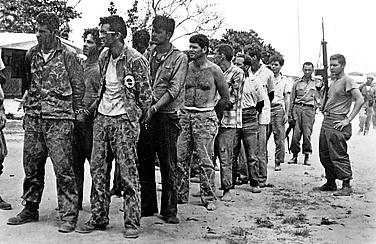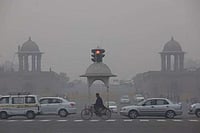Iran has sentenced two women journalists who covered the death of Mahsa Amini to jail on charges of collaborating with the United States, according to reports.
The death of 23-year-old Amini from torture in the custody of Iran's infamous morality police last year had triggered nationwide women-led protests that emerged as the most visible challenge to the Iranian regime. Since then, the Islamic Republic has been cracking down on protesters and their supporters.
The two women journalists have been identified as Niloufar Hamedi and Elaheh Mohammadi. They have been sentenced to seven years of imprisonment.
Hamedi had broken the news of Amini's custodial death and Mohammadi had reported on her funeral, according to the Associated Press (AP). Their reporting played a critical role in triggering in mass-protests. In May, the United Nations (UN) awarded them its premier prize for press freedom "for their commitment to truth and accountability", as per AP.
Hamedi and Mohammadi were detained in September 2022 and the Iranian regime has held them in its custody since.
Tehran Revolutionary Court charged Hamedi and Mohammadi with "collaborating with the hostile American government", "colluding against national security", and "propaganda against the system", AP quoted the Iranian judicial website as saying.
Amini was detained by the Iranian morality police last year for not wearing her Islamic headscarf called hijab properly. She was out with her brother at the time of the incident. In Iran, girls and women are required to cover their heads with Islamic head-covering called hijab. The rule was imposed after Islamic clergy took over the country in the Islamic Revolution of 1979 in which it overthrew the liberal, pro-West monarchy. Amini died three days later from custodial torture. Her death triggered nationwide protests in which women openly defied the Iranian regime, cutting their hair publicly, burning their hijab, and walking around bare-headed.
The monthslong protests have now ebbed and the Iranian regime has brought in even stricter hijab laws that not only increase the punishment for offenders but also increase regulation the mingling of opposite genders in public and also impose high costs on those supporting the protests indirectly, such as travel bans and bans from the usage of internet. Hundreds have also been killed in the crackdown on dissent since Amini's death.
At least 529 have been killed since the protests began last year and over 19,700 have been detained, according to activists cited by AP.
"Iran for months has not offered any overall casualty figures, while acknowledging tens of thousands had been detained," said AP further.






















.png?w=200&auto=format%2Ccompress&fit=max)



